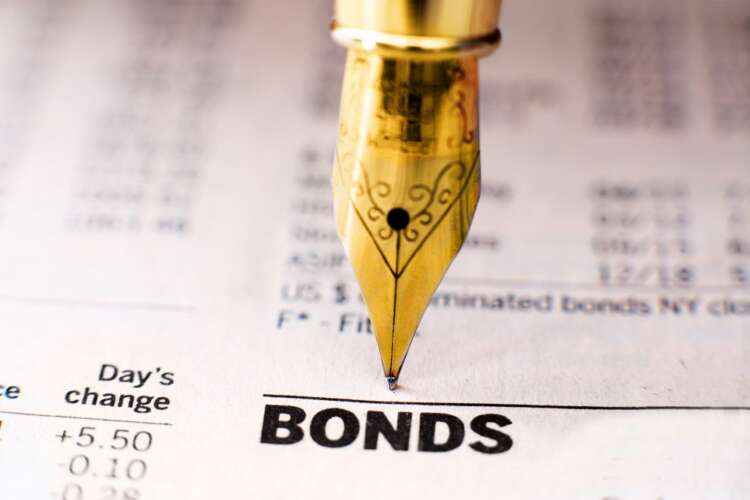Finance
The rise of the Sustainable Bond Market

By Mirko Gerhold, Head of Corporate Bond Origination & Solutions, Commerzbank
Sustainability is becoming more and more important, and nowhere is this more pronounced than the debt capital markets. Governments and regulatory authorities now recognise the power of capital as a tool to deliver sustainability targets across many critically important areas such as decarbonisation in line with the Paris Agreement (well below 2°C), fairer resource allocation and social equality, among many others.
The first sustainable bond was issued in May 2007, yet for many years issuance activity remained very subdued, with only few transactions out of the public sector. This changed in late 2013 / early 2014, when also private issuers (i.e. corporates and banks) started to issue sustainable bonds, and at the same time the public sector significantly increased issuance levels.
At the same time the evolution of common market standards accelerated when in January 2014 the first version of the Green Bond Principles was released. These Principles define how a Green Bond should be issued and what information should be provided, with the aim to foster the transparency and integrity of the Green Bond Market. Such market standards can serve as a catalyst and help to grow the market further and over recent years we have seen the evolution of similar principles for other types of Sustainable Bonds.
If we a look at the Sustainable Bond market today it has developed from a niche product to an integral part of the market. Last year the total issuance of sustainable bonds amounted to more than 387bn EUR-equivalent worldwide. For this year we expect at least EUR 700bn, if not more.
Most of the transactions are so called use-of-proceeds sustainable bonds, where the proceeds of the bond are used to finance or refinance a sustainable purpose. For green bonds these are green projects, e.g. in the area of renewable energy, green buildings or clean transport. Similarly, a social bond finances social projects, such as access to essential services like hospitals or schools. Finally, so-called sustainability bonds are a mix of both types, including green and social projects.
We are also seeing more and more sustainability-linked bond transactions. Here the proceeds are being used for general corporate purpose but features of the bond are linked to the sustainability performance of the issuer in general. A typical structure includes a coupon step-up if the company does not meet pre-defined sustainability performance targets, like reduction of emissions or other objectives.
All these types of sustainable bonds have one feature in common: they allow issuers to link their sustainability strategy to funding in the debt capital markets. Sustainability linked bonds have a clear advantage over their green counterparts and the opportunity for portfolio diversification is significant.
But the sustainable bond market is not only driven by the issuers; more and more investors are also integrating sustainability into their investment strategies. Many of the larger institutional investors have now established dedicated sustainable bond funds and the demand for sustainable assets has increased significantly. The level of importance investors are attaching to sustainability is evidenced by the strong increase in the number of investors who have signed up to the UN Principles for Responsible Investments.
Despite the ongoing growth there is still a lot of momentum in the sustainable bond market and we expect the trend to continue. Diversification is also rising, with more and more issuers from new sectors coming to the market. On the corporate side, for example, historically the green bond market was dominated by utilities, accounting for more than two thirds of sustainable bonds volume back in 2017. In contrast, last year 65% of issuance came from other sectors. In 2019 we saw the first issues out of the Telcom sector and in 2020 the first transactions from the Automotive side.
Interestingly, the share of social bonds has recently increased rapidly. In 2019 more than 80% of the market were pure green bonds, while in 2020 31% were social bonds and about 20% sustainability bonds, while pure green bonds accounted for less than 50% of the market. One of the main reasons for this development was the Covid-19 crisis, as many public sector issuers and several banks issued social bonds in the form of so-called crisis response bonds.
Going forward sustainable finance will remain an important topic as the combat of climate change and solutions to mitigate the consequences of the Covid-19 crisis require a lot of funding. We as a bank want to accompany our clients on their climate transition path and together find solutions to combine sustainability with funding activity in the debt capital markets.

-
Business3 days ago
Mike Bahun and Fundraising University Make a Lasting Impact on Sports Programs Nationwide
-
Top Stories3 days ago
After VW plant victory, UAW sets its sights on Mercedes in Alabama
-
Investing3 days ago
Forex Market Trends to Watch Out For in 2024
-
Top Stories3 days ago
Hedge fund borrowing hits five-year peak, Goldman Sachs says







